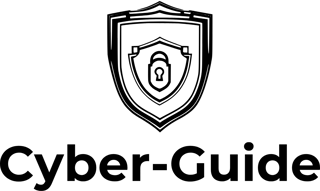IoT Security Compliance: Navigating the Latest GDPR and CCPA Regulations for Smart Devices
INTERNET OF THINGS (IOT) SECURITY


In today's interconnected world, the Internet of Things (IoT) has become an integral part of our daily lives. From smart homes to wearable devices, IoT technology has revolutionized the way we interact with our surroundings. However, with the increasing number of connected devices, ensuring the security and privacy of personal data has become a top priority.
One of the key challenges in IoT security is complying with the latest regulations such as the General Data Protection Regulation (GDPR) and the California Consumer Privacy Act (CCPA). These regulations aim to protect the privacy and personal data of individuals and impose strict requirements on the collection, storage, and processing of data.
Step 1: Understand the GDPR and CCPA Regulations
To navigate the complexities of IoT security compliance, it is crucial to have a clear understanding of the GDPR and CCPA regulations. The GDPR is a European Union regulation that sets guidelines for the collection and processing of personal data. The CCPA, on the other hand, is a California state law that grants California residents certain rights over their personal information.
Image description: An image depicting a lock symbolizing data protection and a globe representing global regulations.
Step 2: Assess Your IoT Devices and Data Collection Practices
Once you have a solid understanding of the regulations, the next step is to assess your IoT devices and data collection practices. Conduct a thorough inventory of all the connected devices in your network and identify the types of personal data they collect. It is essential to have a clear picture of the data flow within your IoT ecosystem.
Image description: An image showing a network of interconnected devices with arrows representing data flow.
Step 3: Implement Privacy by Design Principles
Privacy by Design is a fundamental principle of both the GDPR and the CCPA. It requires organizations to incorporate privacy and data protection measures into the design of their IoT devices and systems. Implementing privacy by design principles ensures that privacy considerations are taken into account from the initial stages of development.
Image description: An image illustrating the concept of privacy by design, with a blueprint of an IoT device showcasing privacy features.
Step 4: Establish Data Protection Policies and Procedures
To comply with the regulations, it is crucial to establish robust data protection policies and procedures. These should include guidelines on data minimization, encryption, access controls, and data breach response. Regularly review and update these policies to align with the evolving threat landscape and regulatory changes.
Image description: An image depicting a document with a shield symbolizing data protection policies.
Step 5: Conduct Regular Audits and Assessments
Regular audits and assessments are essential to ensure ongoing compliance with the GDPR and CCPA regulations. Conduct internal audits to assess the effectiveness of your security measures and identify any vulnerabilities. Additionally, consider engaging third-party auditors to provide an objective evaluation of your IoT security practices.
Image description: An image showing a checklist with a magnifying glass symbolizing audits and assessments.
By following these steps, you can navigate the latest GDPR and CCPA regulations for smart devices and ensure that your IoT ecosystem is compliant with the highest standards of security and privacy.


